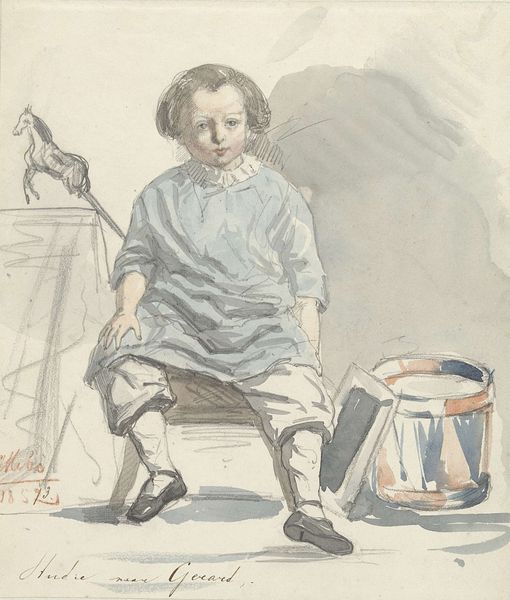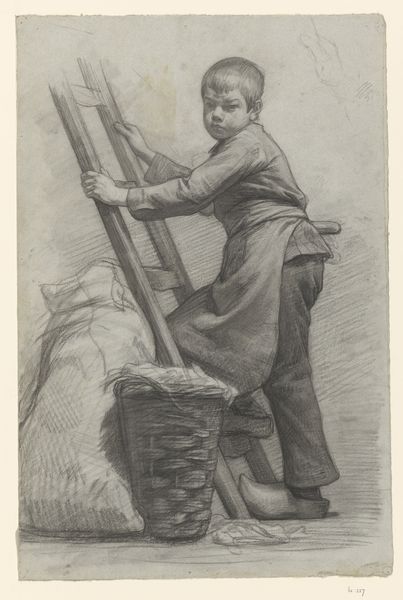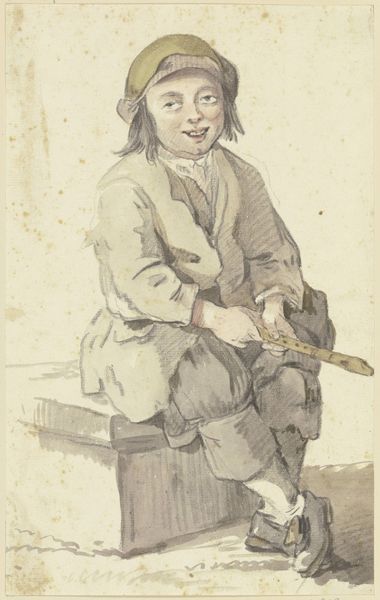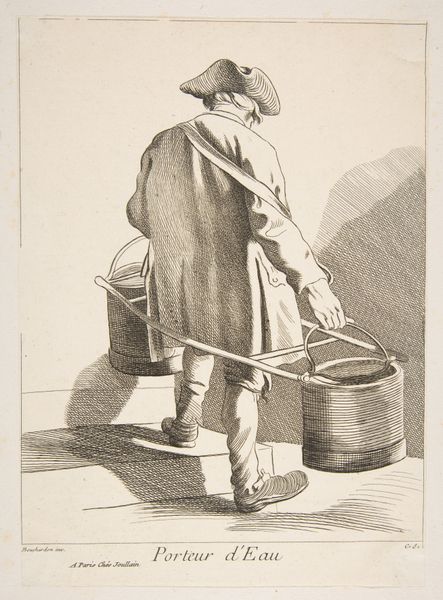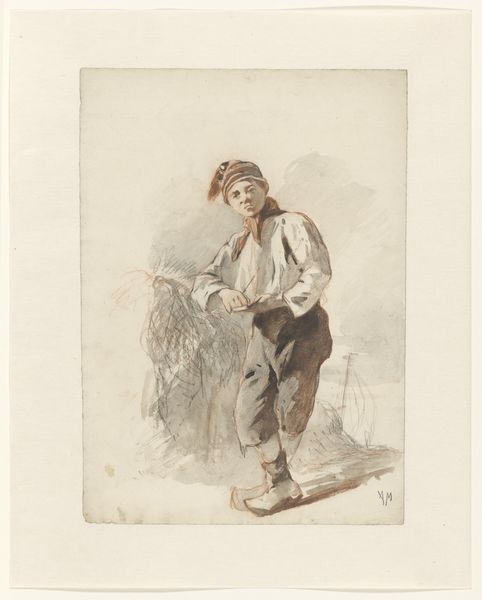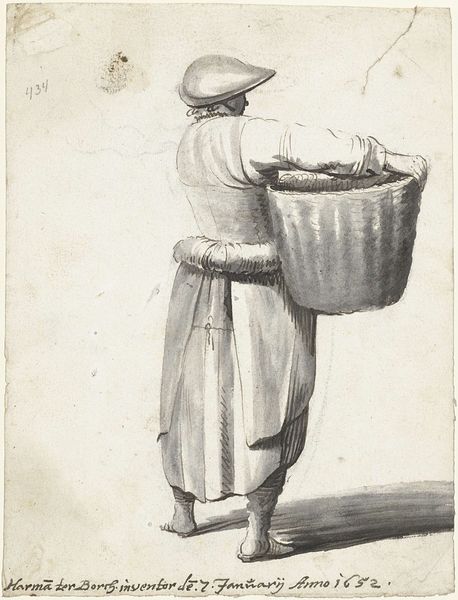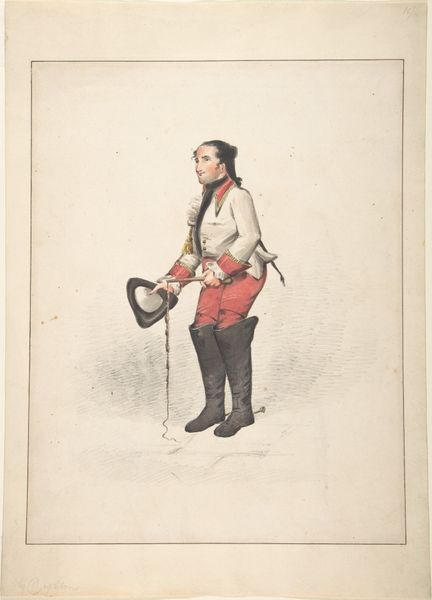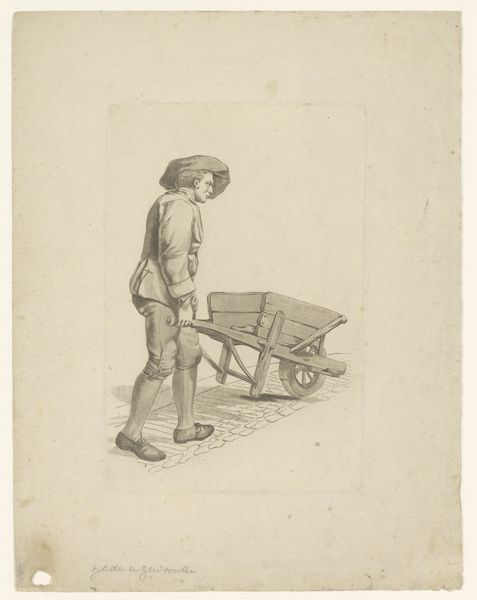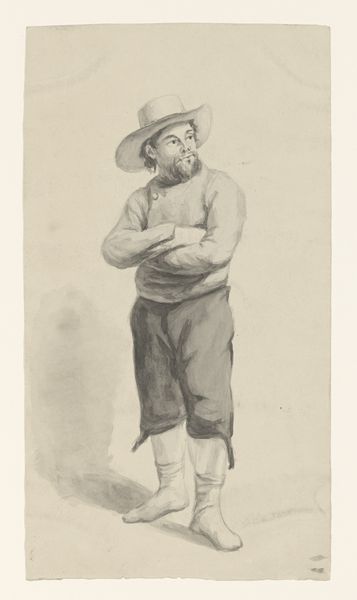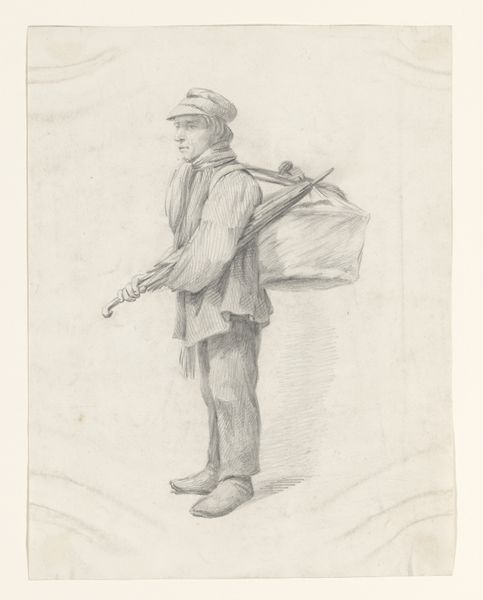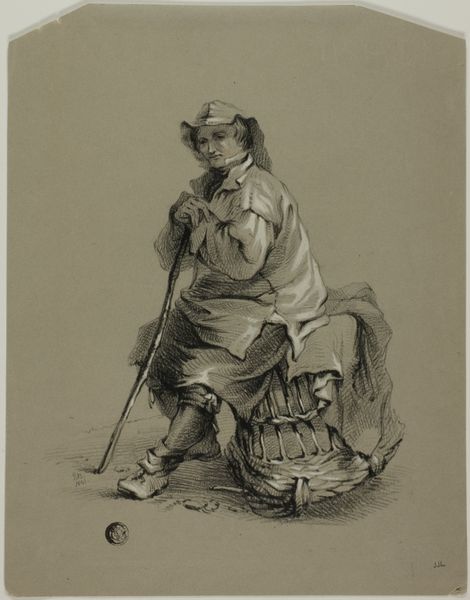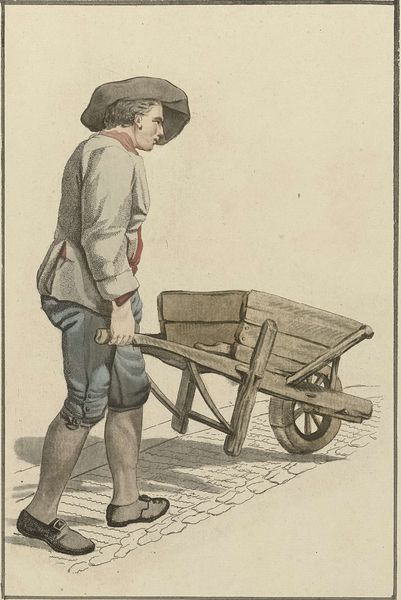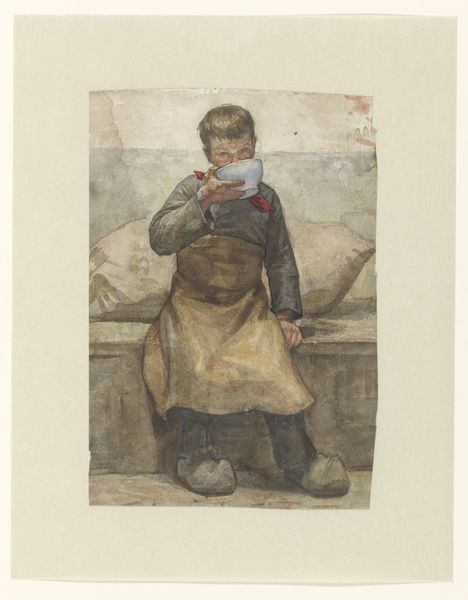
Dimensions: height 470 mm, width 290 mm
Copyright: Rijks Museum: Open Domain
Curator: Let's delve into this artwork by Willem Witsen: "Standing Girl in Ballet Costume Amongst Stage Props," created sometime between 1870 and 1923, using drawing and watercolor. Editor: Thanks! It’s interesting, almost melancholy. The muted tones give it a quiet, backstage feel, a moment of stillness amidst performance. How would you interpret this work? Curator: The choice of watercolor and charcoal, both relatively inexpensive and accessible materials, suggests an exploration of the everyday realities of artistic production. The props aren’t glamorous; they're functional. The drawing highlights the often unseen labor that underpins spectacle and performance. Consider the social context: who was consuming images like these, and what sort of cultural capital did ballet represent? Editor: That's interesting, the idea of focusing on the means of production. It really makes me look at it differently. So the way he chose to portray ballet – almost unglamorously – has a lot to do with questioning who benefits from that labor? Curator: Precisely! And not only who benefits, but also who performs that labor, literally and artistically. Witsen has made an interesting composition of props and a young performer; it's no academic masterpiece made to be hung in a formal salon. How do those materials inform the meaning? Is there something challenging the traditional boundaries of high art that you can observe? Editor: I see what you mean. Watercolor feels less...precious somehow. It also flattens the space; you don't have a sense of depth, reinforcing the sense of artifice and backstage reality, perhaps even stripping away the "preciousness" we might typically ascribe to ballet or portraiture. Curator: Exactly! The drawing refuses to hide its methods of production, almost reveling in a different concept of aesthetics of “high art”. This challenges us to consider art, labor, and representation as inherently linked within a system of cultural and economic values. What do you think of portraiture after this? Editor: That is such a cool approach, looking at how art is actually made and the layers behind what is portrayed, and not just at the subject. Curator: Indeed. By scrutinizing the materials and their social implications, we gain a deeper understanding of both the artwork itself and the cultural landscape it reflects.
Comments
No comments
Be the first to comment and join the conversation on the ultimate creative platform.
